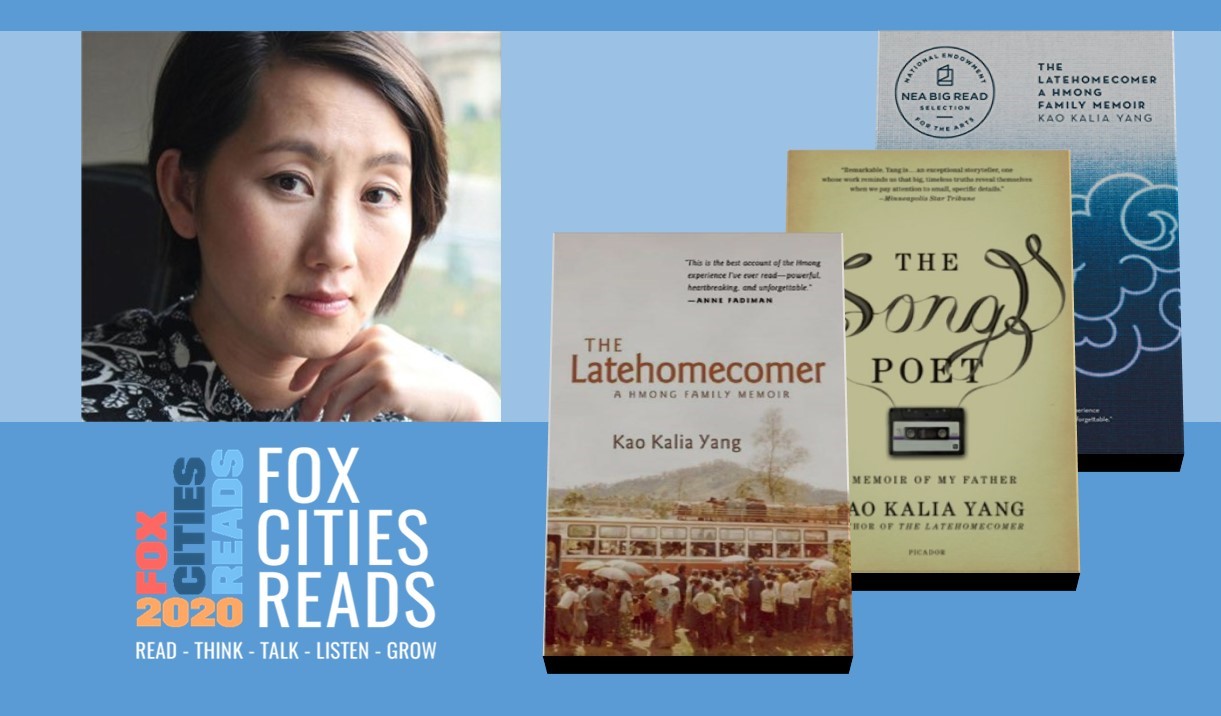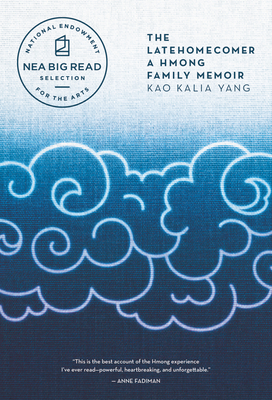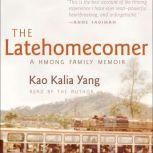A Hmong Family Memoir
Yang’s award-winning memoir of her family’s harrowing escape from war in Laos is a love letter to her grandmother, a troubling portrait of the consequences of us intervention in Southeast Asia, and a glimpse into the little-seen exodus of the Hmong people, first to refugee camps in Thailand and then, for many, to new homes in Minnesota.
Yang’s award-winning memoir of her family’s harrowing escape from war in Laos is a love letter to her grandmother, a troubling portrait of the consequences of us intervention in Southeast Asia, and a glimpse into the little-seen exodus of the Hmong people, first to refugee camps in Thailand and then, for many, to new homes in Minnesota.
less …The Latehomecomer. By, Quincy, Quinn, Shayla, Maddie, Malichi, Maggie. Kao Kalia Author and Main Character. Title Disscussion The Second Theme Plot Explanation. Conflict: the language barrier and not wanting to learn Solution: Escape To America To start out Kalia is no interested. The Latehomecomer: A Hmong Family Memoir. Minneapolis: Coffee House Press. Chicago / Turabian - Humanities Citation (style guide) Yang, Kao Kalia, 1980-, The Latehomecomer: A Hmong Family Memoir. Minneapolis: Coffee House Press, 2008. MLA Citation (style guide) Yang, Kao Kalia. The Latehomecomer: A Hmong Family Memoir. Minneapolis: Coffee House.
- Coffee House Press
- Paperback
- April 2017
- 312 Pages
- 9781566894784
About Kao Kalia Yang

Kao Kalia Yang is a teacher, public speaker, and writer. Yang is the author of the award-winning book The Latehomecomer: A Hmong Family Memoir (Coffee House Press, 2008) and the book The Song Poet (Metropolitan Books, 2016). She is a graduate of Carleton College and Columbia University’s School of the Arts. Yang lives in Minneapolis, Minnesota, with her family.
Praise
2010 PEN USA Literary Award for Nonfiction Finalist
2009 Minnesota Book Award Winner
2009 Minnesota Readers Choice Award Winner
2009 Skipping Stones Honor Award Winner
2009 Asian American Literary Award Finalist
2008 Gustavus Myers Outstanding Book Award Winner
“A narrative packed with the stuff of life.”—Entertainment Weekly
“Inspiring . . . Yang has performed an important service in bringing readers the stories of a people whose history has been shamefully neglected.”—Kirkus Reviews
“[The Latehomecomer] is the love story of [Yang’s] parents, a gripping tale of adventure and escape, a history lesson of the Hmong people dating to their years in China, a tribute to Yang’s beloved grandmother and a window into Hmong funeral customs. . . . Thanks to Yang, the grandmother will not be forgotten. And neither will this book.”—Minneapolis Star Tribune
Discussion Questions
1. The Hmong language is intimately tied to Yang’s experience of, and expression of, Hmong culture. Her arrival in the United States means learning English and having to navigate a new culture in that language. How do the languages of our families, communities, and cultures color how we inhabit those spaces? How do they create and sustain those bonds?
2. Yang’s grandmother is a powerful figure in The Latehomecomer, and her resourcefulness and wisdom in many ways make possible the family’s journey from Laos to Minnesota. The attention to her role in their story is one of many ways the author focuses the story on others, making this a “family memoir.” How does that choice affect your reading of the book? What does it mean for an author to define “self ” in the context of “family”?

3. The United States was populated by colonized Native peoples, voluntary migrants, refugees whose migration was coerced by conditions at home, and slaves. How do the complexity of our origin stories and learning about the conditions under which Hmong families like the Yangs arrived change your understanding of citizenship, Americanness, and home?

4. When the Yangs cross the Mekong, they’re forced to leave their family photos behind. How do belongings carry meaning in The Latehomecomer? What other objects take on significance beyond their utility in the book? the latehomecomer 279
5. Yang pays close attention to her characters’ surroundings—we can see, smell, and hear the mountains of Laos, the refugee
camps in Thailand, and the family’s first winter in St. Paul. How does evoking the spaces her family inhabits create emotion?
Visio for mac torrent. How do those contrasts give weight to their journey?
Interviews
Families tell themselves their stories all the time—it’s one of the ways that we define ourselves as related, as more than demographic units. What inspired you to move from sharing stories within your family to capturing your family’s stories on the page?
Too many people in my community have lived for far too long without understanding on their side. They have not had the language, the time, and many times the opportunity to answer an often-asked and sometimes-acted question, “What are you people doing here?” I want to work on behalf of a deeper understanding of how it is that the Hmong are here in America, spread across the globe; this was a source of great motivation and inspiration for me to write the book, to become a writer.
How did you capture the parts of your family’s story that happened before you were born? What research went into representing those moments in a way that felt real to the people who lived them? Did you worry about the ways in which their stories and your research might diverge?
I was born at a time and in a place where stories were the only means by which the Hmong could leave the confines of the refugee camp. I was a vessel for these stories, some hope of some future somewhere. A big part of the work I did in the writing of this book was to piece together the stories inside of me within memories from my family, within the larger framework. I read pretty much all that had been written in English on the Hmong American experience. I took the stories I had been told by my loved ones and wrote them alongside the documented histories; we’ve been sadly neglected, often misrepresented.
Oral storytelling is a big part of Hmong culture, and so many people first experienced The Latehomecomer from your presentations and live performances. Does telling your story to communities, schools, and groups alter your relationship to your book? Does it change your relationship to your family’s stories?

I belong to a people who are new to what is written. My father says that when I write, I write on paper, but when I speak, I write on the fabric of the human being. This is what gives me the courage to speak. I am much more comfortable on the page. Living a comfortable life is not one of my goals. Telling these stories out loud has forced me to become a much more public, more influential, perhaps more responsible person.
The Latehomecomer Summary
How do the rhythms of oral storytelling shape what’s on the page?
My Uncle Eng once told me that the purpose of a story is to serve as a stop sign on the road of life; its purpose is to make audiences pause, look at both sides, check the trajectory of the horizon. This is a guiding principle for me on the page. I don’t stumble over traditional beginnings, middles, and ends; I am interested in making my readers act—which is very much the function of oral storytelling, the form I come from.
The Latehomecomer
The Latehomecomer is, in many ways, a series of love stories— between your parents, between you and your grandmother, and between you and your family. How does love animate and reshape what is, in purely historical terms, a story of war, loss, and trauma?
The Latehomecomer Book
Love, for me, is the reason why we remember our lives in stories, with characters and places, vivid and true. A good browser for mac. It is easy to talk of the contents of a book. It is far harder to forget the love one encounters between the pages of lives.
